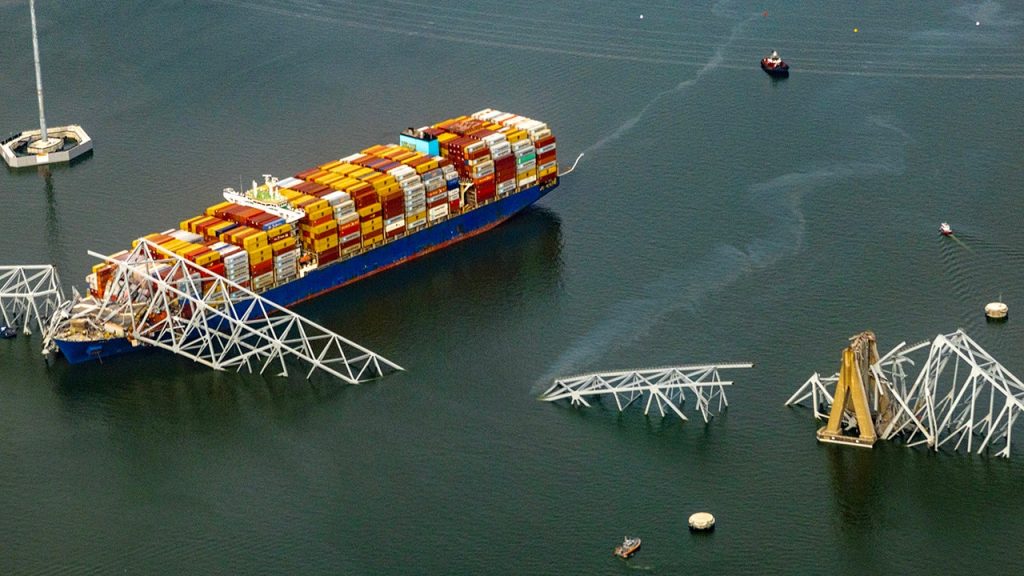Dispatch audio from emergency responders captured the tense atmosphere after a cargo ship rammed into Baltimore’s Francis Scott Key Bridge early Tuesday, causing it to be completely destroyed. Maryland Governor Wes Moore stated that the Dali cargo ship had issued a mayday call reporting power loss just before the collision, moving at a fast speed toward the bridge. The 985-foot-long vessel struck a support, leading to the bridge collapsing into the water within seconds. Construction workers were working on the bridge at the time of the collapse, prompting a search for those in the water and a call for a dive team.
During the dispatch call, it was reported that vehicles had been submerged in the water after the main portion of the bridge collapsed. Police were stopping traffic from entering the bridge, and the incident was described as a “mass casualty” event. Two people were rescued, but six construction workers working on the bridge were still missing and presumed dead. The ship, owned by Grace Ocean Private Ltd., was moving at 8 knots at the time of the crash, with all crew members accounted for and no injuries reported on board. An inspection in Chile last June had identified propulsion and machinery issues on the Dali, while a later inspection by the U.S. Coast Guard in New York did not find any deficiencies.
The Francis Scott Key Bridge, a 47-year-old structure, was rated as being in fair condition by federal inspectors, but experts noted that it did not have pier protection to withstand the impact of the ship. The ship managed to send out a warning before the collision, enabling authorities to limit traffic on the bridge. The accident occurred at 1:30 a.m., before the morning rush hour, reducing the potential for further casualties. The fate of the missing construction workers remained unknown, with efforts ongoing to locate them. The bridge collapse raised questions about infrastructure safety and the regulation of maritime vessels, highlighting the potential risks of such accidents.
The cargo ship’s propulsion issues raised concerns about the maintenance of maritime vessels and the potential risks posed by deficiencies in essential equipment. With inspections revealing problems with gauges and thermometers, there were questions about the thoroughness of safety checks conducted on ships. The Coast Guard inspection in New York, which did not find any deficiencies, also raised questions about the effectiveness of these assessments in identifying potential risks. The accident served as a reminder of the importance of regular inspections and maintenance of ships to prevent catastrophic events like the bridge collapse.
The response to the bridge collapse highlighted the coordination and efforts of emergency responders in dealing with the aftermath of the accident. Dispatchers worked to ensure that notifications were made to local hospitals and that appropriate resources were deployed to search for and rescue those who were missing. The tragedy underscored the dangers faced by construction workers and the risks associated with infrastructure projects, particularly when working on aging bridges. The recovery efforts continued as authorities worked to locate and recover the missing workers, providing support to their families and colleagues during a difficult time. The incident served as a somber reminder of the risks involved in construction and maritime industries and the importance of safety measures to prevent accidents and protect workers.


